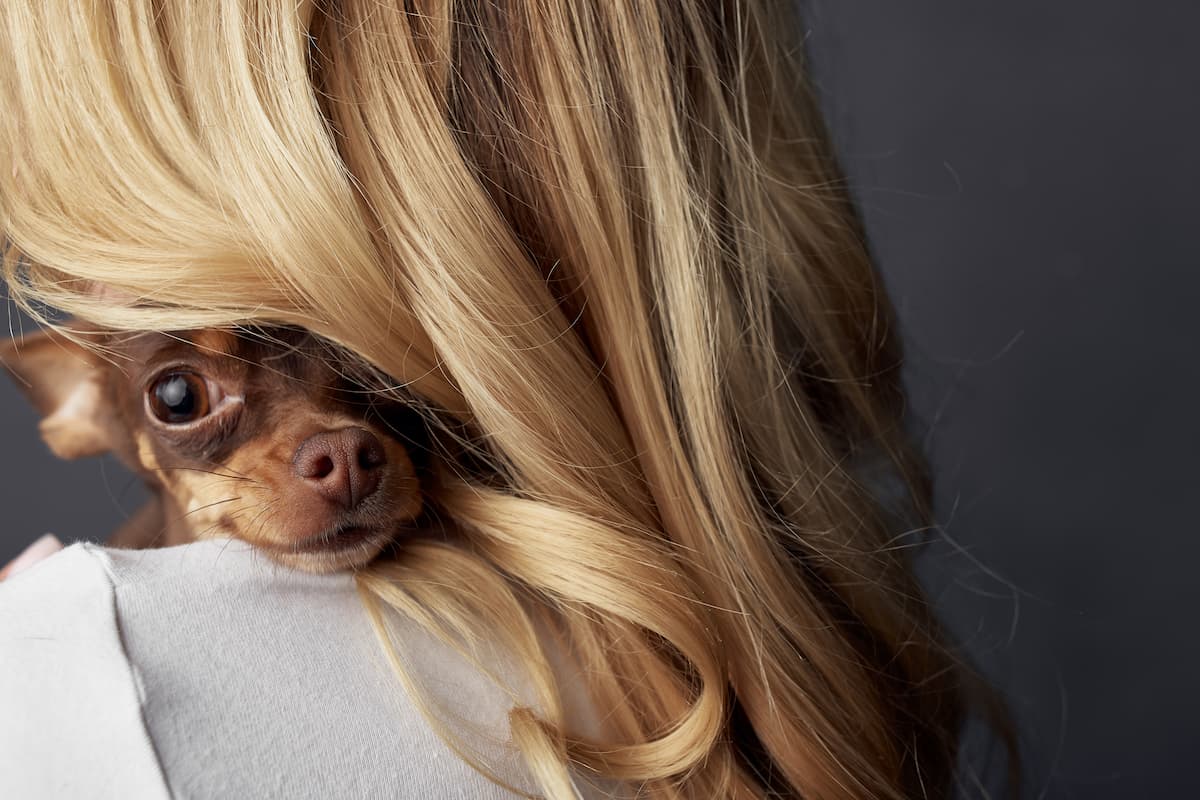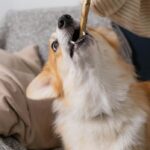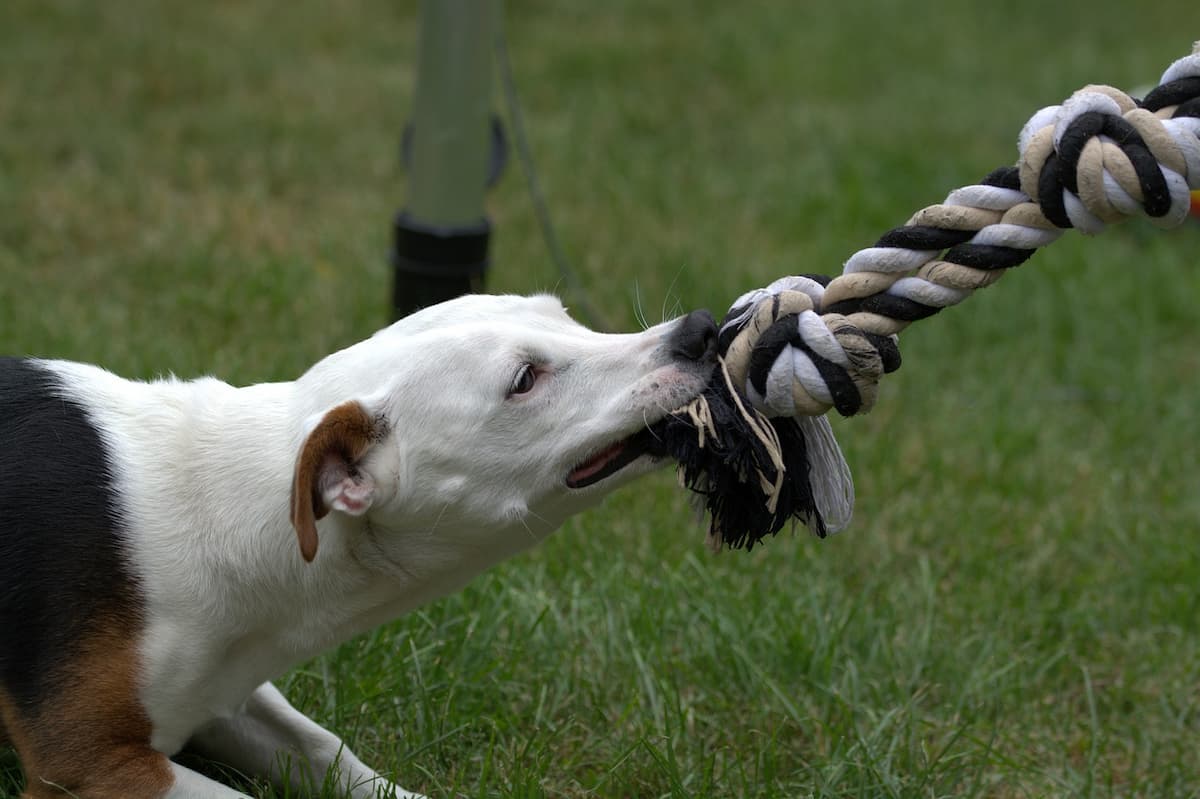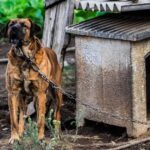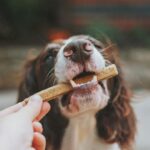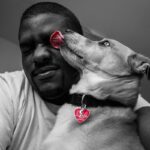Have you ever found yourself in a hairy situation with a furry friend?
Picture this: you’re sitting calmly on your couch, engrossed in your favorite show, when all of a sudden, your adorable canine companion pounces on you with licks and tail wags.
But then the unexpected happens – Fido sinks his teeth into your luscious locks! Ouch!
So, why do dogs bite your hair?
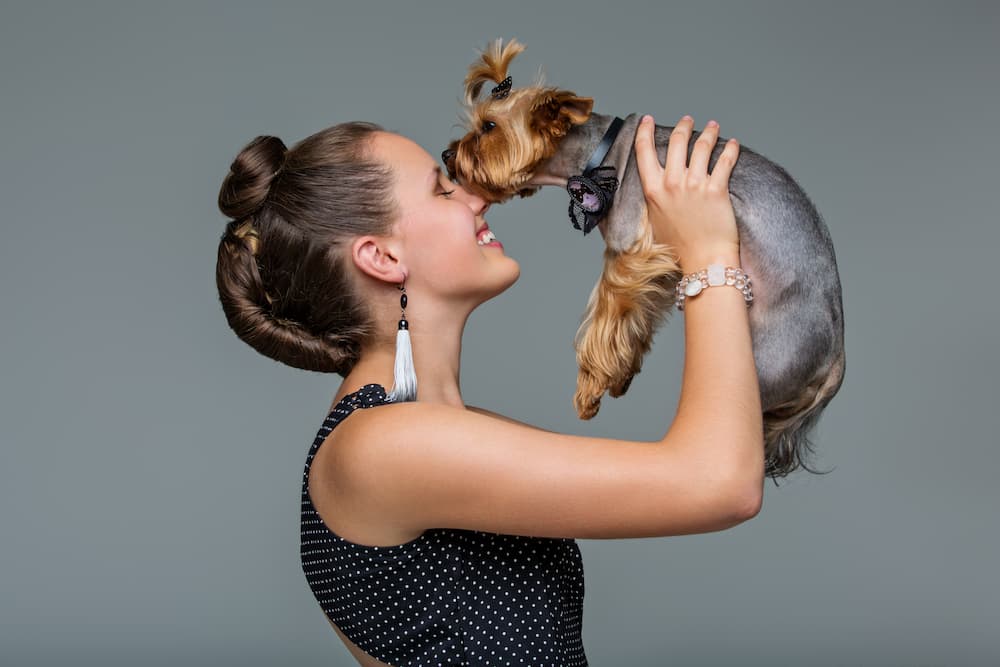
Why do dogs find hair so enticing to bite?
Dogs have an uncanny ability to be fascinated by the most peculiar things, and human hair is no exception.
If you’ve ever had the experience of a furry friend tugging at your tresses, you might have wondered what exactly makes your locks so irresistibly alluring to them.
One possible explanation for this behavior lies in a dog’s natural instinct to hunt and explore their environment.
Hair, with its various textures and scents, can captivate their senses and trigger their hunting instincts.
Just like how dogs might be drawn to unfamiliar smells or objects, your flowing locks might pique their curiosity, leading them to investigate by biting or mouthing.
It’s their way of exploring the world around them, even if it means giving your hair a little love bite.
Another factor that contributes to dogs chewing on hair is their innate desire for attention and affection.
Dogs are social animals and often seek interaction with their human companions. By nibbling on our hair, they may be attempting to engage us in play or seeking our attention.
This behavior can be reinforced if we respond with laughter, petting, or any form of positive interaction, inadvertently encouraging them to continue their curious fascination with our hair.
Additionally, dogs may develop their hair biting habits in their infancy.
Some dogs develop quirky habits over time, and hair-biting could be one of them.
If your dog has been biting your hair since they were a pup, it may have become a learned behavior stemming from a variety of factors such as teething, stress relief, or even for comfort.
Like humans, dogs can develop habits that provide them with a sense of comfort or relief, and hair-biting may offer a soothing sensation for them.
Finally, it’s worth mentioning that dogs might bite your hair out of boredom or as a form of play.
Dogs are social animals that require mental and physical stimulation, and if they don’t receive enough exercise or interactive playtime, they may resort to finding their own entertainment.
Your hair presents an appealing target for them to engage with, especially if it moves or makes interesting sounds.
If your dog feels neglected or bored, they may resort to playful hair-biting as a means to capture your focus and fill their need for companionship.
Signs that your dog is about to bite your hair
Now that you know why your dog is biting your hair, there are a few signs to look out for that may indicate your furry friend is about to take a nibble on your precious locks.
Keep an eye out for these subtle hints to better understand why dogs might feel compelled to chomp on your hair:
- Unusual obsession: One of the first signs that your dog is eyeing your hair as a potential snack is an unusual fixation on it.You may notice your pup staring intensely at your head, following your every move.
This unwavering focus often means that they are captivated by the texture, smell, or movement of your beautiful tresses.
This could be a precursor to hair-biting behavior, so it’s essential to remain vigilant and observant during these moments.
- Playful tugging: Dogs have an innate sense of playfulness, and sometimes their instincts get the best of them. If your furry friend starts gently tugging at your hair while wagging their tail and maintaining a playful demeanor, it could be a sign that they are testing the waters.Dogs often explore their surroundings through play, and your hair just happens to be one of their favorite toys at the moment.
While this behavior is usually harmless, maintaining a watchful eye and redirecting their attention to a more appropriate toy is crucial to avoid any accidents.
- Nervous or anxious behavior: Dogs may resort to biting your hair as a coping mechanism when they feel anxious or nervous. If your dog starts exhibiting signs of discomfort, such as pacing, panting, or whining, while simultaneously showing interest in your hair, it may be their attempt to find solace or relieve stress.This behavior is most commonly seen in high-stress situations, such as during thunderstorms or fireworks displays.
Comforting your dog, creating a calming environment, and seeking professional help if necessary can help alleviate their anxiety and reduce the likelihood of hair-biting incidents.
By understanding the signs that may precede this behavior, you can take steps to prevent it or redirect your dog’s focus to more suitable playthings.
Preventing dog hair-biting incidents: Tips and tricks
Here are a few tips and tricks you can try to prevent and address your pup’s hair-biting.
One effective way to deter your dog from biting your hair is to provide them with alternative outlets for their need to chew and play. Make sure your pup has plenty of chew toys, such as specially designed bones or rubber toys.
It’s important to choose toys that are appropriate for your dog’s size and breed.
This will help redirect their attention from your hair to the more suitable and safe chew toys.
Additionally, establishing clear boundaries and teaching your dog proper obedience commands can go a long way in preventing hair-biting incidents.
Invest time in basic training sessions and ensure your dog understands and follows commands such as ”Leave it” or “Drop it”.
Consistency is key; reward your furry friend with treats and praise when they obey these commands.
Over time, they will learn that biting hair is not acceptable behavior.
Another helpful tip is frequent grooming and maintaining a tidy appearance.
Dogs are attracted to hair that is loose and hanging, as it may resemble a toy or prey. Keeping your hair tied up or neatly groomed can significantly reduce the chances of your dog being tempted to bite it.
Regular grooming sessions for your canine companion can also help in preventing excessive biting or chewing behavior, as well as contribute to their overall wellness.
Remember, understanding why dogs bite hair is essential, but finding ways to prevent it is equally important.
By providing suitable alternatives for chewing, establishing boundaries through training, and maintaining a well-groomed appearance, you can nip this behavior in the bud.
Be patient and consistent, and don’t forget to shower your furry friend with love and attention to encourage positive behaviors.
When to seek professional help for hair-biting behavior
Hair-biting behavior in dogs may seem like a harmless habit, but it can actually indicate an underlying issue that requires professional help.
While occasional hair-biting is considered normal grooming behavior, excessive and persistent hair-biting can be a cause of concern.
Here are some signs that indicate it’s time to seek professional assistance:
- Consistent and obsessive hair-biting: If your furry friend is constantly chewing on their own or even on your hair, it could be a sign of compulsive behavior.When the hair-biting becomes a regular occurrence and interferes with their daily activities, it’s crucial to consult a professional.
A veterinarian or a professional dog trainer can help determine the root cause of this behavior and develop an appropriate treatment plan.
- Physical harm or discomfort: Hair-biting can sometimes result in hair loss, skin irritation, or even injuries.If your dog’s hair-biting behavior leads to visible damage or discomfort, it’s time to seek professional help.
A qualified veterinarian can thoroughly examine your dog’s skin and rule out any underlying medical conditions such as allergies or skin infections.
Additionally, they can offer guidance on how to manage the behavior and prevent further harm.
- Negative impact on your dog’s overall well-being: Hair-biting behavior may be a manifestation of underlying stress or anxiety in dogs. If you notice that your furry companion is demonstrating other signs of distress, such as increased barking, pacing, or changes in appetite, it’s advisable to seek professional assistance.A dog behaviorist or a veterinary behaviorist can assess your dog’s overall well-being and create a behavior modification plan tailored to their specific needs.
They can also provide guidance on reducing stress and anxiety through positive reinforcement techniques and appropriate mental stimulation.
Remember, seeking professional help is crucial to address hair-biting behavior in dogs effectively.
They can help identify the underlying causes, recommend appropriate treatments or training, and support both you and your furry friend throughout the process.
With the right guidance, you can help your dog break free from the hair-biting habit and improve their overall quality of life.
FAQ
Q: Why do dogs bite hair in the first place?
A: Well, there are a few explanations for this playful behavior.
One reason could be their natural instinct to explore and interact with objects around them, including our hair.
Dogs use their mouths to investigate the world, much like we use our hands. And since hair is often dangling from our heads, it becomes an interesting and easily accessible target for them.
Q: Is it possible that dogs mistake our hair for toys?
A: Absolutely! Dogs are known for their love of chew toys, and sometimes our hair can resemble a fun and exciting plaything to them.
The texture and movement of our hair might trigger their instincts to play and chew, which can make it irresistible for them.
Q: Are there certain hair types or hairstyles that attract dogs more?
A: There isn’t any scientific evidence to suggest that dogs are more attracted to specific hair types or hairstyles.
However, some dogs might be more inclined to go after longer hair that flows and sways enticingly.
So, if you have a flowing mane, it might just be extra tempting to your furry friend.
Q: Can biting hair be a sign of aggression?
A: Not necessarily.
When dogs bite hair, it’s often done playfully and without aggression or any malicious intent. It’s their way of engaging with us and showing affection, much like they would with their littermates.
However, it’s essential to pay attention to your dog’s body language.
If they growl, show signs of discomfort or become overly possessive or aggressive with your hair, it may be a sign that further training or behavior modification is needed.
Q: How can I discourage my dog from biting my hair?
A: There are a few techniques you can try to redirect your furry friend’s attention.
First, provide them with appropriate chew toys or interactive puzzles to keep them occupied and satisfied.
If they start going for your hair, calmly redirect them towards their toys or offer a treat to shift their focus.
Consistency is key, so be patient and reward them when they choose their toys over your hair.
Q: Is there anything I can do to prevent my dog from biting hair altogether?
A: While it might be challenging to completely eliminate this behavior, you can take steps to minimize it.
Regular grooming and keeping your hair tied up or covered can help reduce the temptation for your dog. Additionally, training your furry friend using positive reinforcement techniques can teach them appropriate play behavior and discourage hair-biting tendencies.
Q: Can hair-biting be dangerous for dogs or humans?
A: Hair-biting is generally harmless, barring any aggressive tendencies.
However, it’s essential to monitor the situation closely to avoid any accidents or potential hair-pulling, which could lead to discomfort or minor injuries for both the dog and the human.
If you ever feel uncomfortable or unsafe with your dog’s behavior, consult a professional trainer or behaviorist for guidance.
Closing Remarks
So, the next time you find yourself wondering why on earth your furry friend is giving your luscious locks a good nibble, remember that it’s not necessarily a sign of aggression or dominance.
Dogs have their unique ways of communicating and interacting with the world around them, and hair-biting might just be one quirky behavior they’ve picked up.
From exploring scents to seeking attention, dogs have various motives behind this peculiar habit. It could be their instinctual behaviors lingering from their wolf ancestors, or it might simply be a way for them to satisfy their curiosity.
Whatever the reason, it’s essential to evaluate your dog’s overall behavior and ensure that both you and your canine companion feel comfortable and safe.
Remember, positive reinforcement techniques and clear communication are key in shaping your dog’s behavior.
If hair-biting becomes problematic or you’re concerned about your dog’s actions, don’t hesitate to seek professional guidance.
With a little understanding and guidance, you can find the harmony between your fabulous hair and your beloved furry friend.
So, the next time you feel a little nip on your mane, embrace it as a reminder of the unique bond you share with your canine companion.
After all, there’s nothing like a dog’s playful antics to keep life interesting and your hair on its toes.


